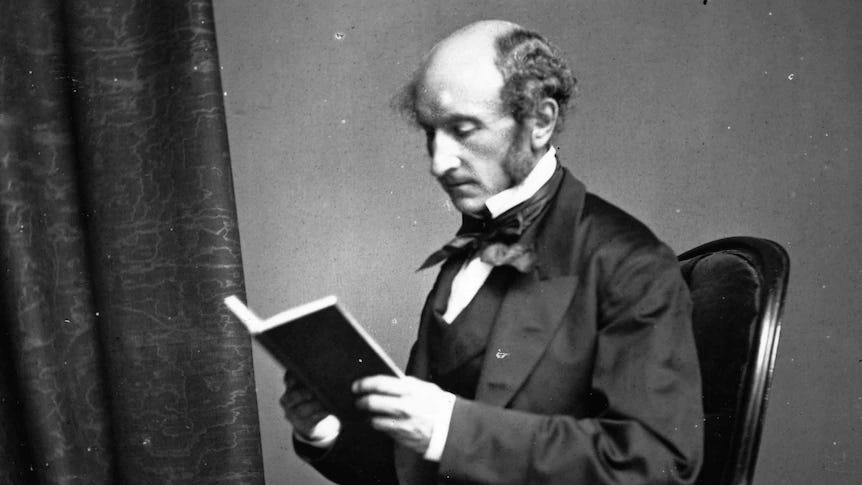The Immorality of Medicare
In May of 1973, a year before the first incarnation of Medicare became law, the Australian Medical Association sent a letter to its members warning about the dangers of socialised medicine. They were concerned about the “interference by governments in the relationship between doctor and patient“[1] and highlighted key freedoms that they said should be protected:
- No barrier separating the patient from free choice of specialist or hospital.
- Minimum intrusion between doctor and patient by governments.
- Freedom and opportunity to practise on a fee-for service basis without threat of coercion or compulsion.
- Freedom to provide a personal service based on personal responsibility within a system based on quality rather than quantity.
They were concerned about the
“interference by governments in the relationship between doctor and patient“
The AMA abandoned these goals long ago and now merely lobbies Governments for favours. But 50 years later, their worst fears have become a reality: an impossible melee of item numbers, rules and coercion stands between Australians and their doctors.
Consider the case of Dr. Andre Leong in WA. Dr. Leong was harassed for billing a series of item numbers more frequently than other GPs. His training and experience (including leading a medical team in Indonesia after the 2004 tsunami) prepared him for performing operations that most GPs do not. Other doctors frequently referred patients to him to perform these procedures. He stood out and was subjected to lengthy audits and investigations until ultimately forced to stop billing these items. He retired altogether shortly after. There is overwhelming community support for him online.

47% of GPs report they either avoid providing certain services or claiming certain rebates due to Medicare compliance fears, while 61% report that the complexity of Medicare is something that worries them outside their workday. [2] Many choose to under-bill, fearful of compliance action, claiming 20-minute consultations despite spending up to 45 minutes with a patient. This pressure on doctors to quickly finalise a consultation is a common experience for patients.
Some doctors are fed up: ‘We have had enough of the coercive control, of the abusive relationship that is Medicare’[3], they protest. To add insult to injury, doctors are constantly accused of rorting The System. It is no surprise there is a shortage of GPs.
The situation with mental health is even more depressing. The number of hoops you have to jump through, and the fight you have to put up, can make anyone give up and surrender to their daemons. In a way it is reassuring when you realise that GPs, psychologists, psychiatrists, and nutritionists are all as confused and perplexed by The System as you are. I once spent 3 hours on the phone with Medicare, explaining to them the difference between related mental health items, the corresponding mental health plans, and the review process of these plans. All to convince them to pay me the refunds they were supposed to. It is absurd, demoralising and abusive.

It ought to be so simple. You go to a doctor (of which there would be many more), you pay, you receive the care that is right for you, and you form lasting relationships with your healthcare providers. No man in the middle setting arbitrary barriers and obstacles.
If we really are an egalitarian society that genuinely cares for the less fortunate, why would anyone think that without the Government we would just leave people to die on the streets? Despite losing half their income to the different levels of Government[4], Australians still donate generously to charity.
Not-for-profit organisations like the Little Company of Mary, which run the Calvary Hospitals, demonstrate society’s responsible concern. But like all monopolistic predators, Governments react to competition by trying to shut it down. That is the case with the Calvary Hospital in Canberra, now subject to a hostile takeover by the ACT Government. What then is the opportunity cost of this socialised experiment? How many foundations have not been created, how many research labs, how many hospitals?
And yet, calls to protect “our health system” are made repeatedly with a quasi-religious fervour. Protecting The System takes precedence over any individual’s best interest. It is the main reason why, for example, bringing your parents from overseas to live in Australia can cost up to $70k. Their old age is too big a threat to The System. The (involuntary) contributions you have made to fund it matter very little.
The overriding of your individual best interest by a collective abstraction which the Government claims to represent was in full display during the pandemic years.
It is clear that protecting The System is more important than going to see your dying mother, your job, your business, your wedding, your graduation, your first big gig; anything meaningful in your life can and will be sacrificed on the altar of the collective good.
Medicare, the crown jewel of Australia’s universal healthcare system, is an immoral, ruthless, conniving partner that manipulates Australians into paying for and celebrating their own abuse.
Please support the Calvary Hospital at www.savecalvary.com.au.
[1] https://trove.nla.gov.au/newspaper/article/110709423?browse=ndp%3Abrowse%2Ftitle%2FC%2Ftitle%2F11%2F1973%2F05%2F14%2Fpage%2F12209327%2Farticle%2F110709423
[2] https://www1.racgp.org.au/newsgp/racgp/health-of-the-nation-investment-needed-to-secure-t
[3] https://www1.racgp.org.au/newsgp/professional/a-kick-in-the-guts-frontline-gps-respond-to-medica
[4] https://www.taxpayers.org.au/submissions/the-cost-of-tax-finding-the-total-tax-burden-for-a-resident-of-victoria-australia







